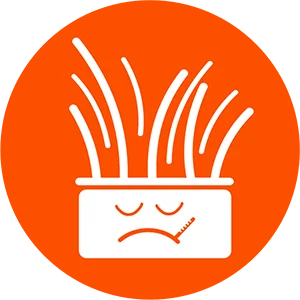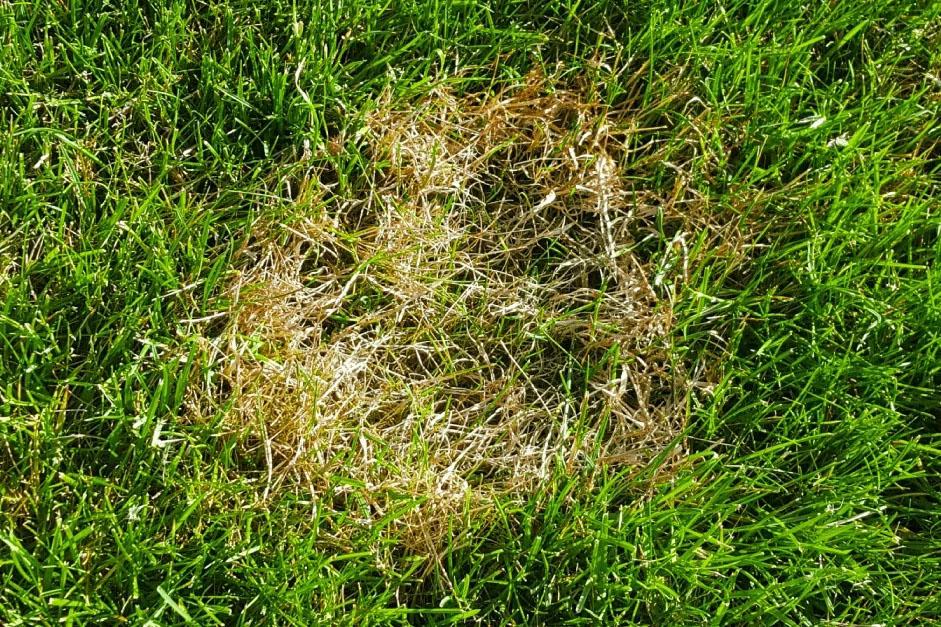Effective Lawn Fungicide Treatment in Myrtle Beach, SC
Effective Lawn Disease Control
Your lawn may be dealing with a fungal disease if you notice brown spots or circular patches. Most diseases that affect grass are caused by fungal growth that can rapidly spread to the rest of your lawn. Getting ahead of a spreading disease is critical to limiting the damage it will cause. Lawn Pride offers lawn fungicide treatment to effectively address fungal diseases in your yard. Learn more about our lawn fungicide treatments.
Treatments for Lawn Fungus
It's vital to move quickly when handling a fungal disease in your yard. We can diagnose the fungus type and find the most effective fungicide to control the spread of the disease in your lawn. The best way to control lawn fungus control is to quickly identify the type of disease attacking your yard and apply a fungicide before the fungus gets out of control. Disease in turf is influenced significantly by rainfall, temperature, humidity, your cultural practices, and the environment in your area. Some of the most common fungal diseases that affect yards include the following:
- Brown patch lawn disease
- Yellow patch lawn disease
- Zoysia patch lawn disease
- Summer patch lawn disease
- Take-All patch lawn disease
- Dollar spot lawn disease
- Snow mold lawn disease
- Slime mold lawn disease
- Leaf spot lawn disease
- Pythium lawn fungus blight
- Red thread lawn disease
- Fairly Ring lawn disease
- Necrotic ring spot lawn disease
- Powdery mildew lawn disease
- Rust lawn disease
- Fusarium patch lawn disease
- Stripped smut lawn disease
- Crown rot anthracnose
The disease tends to return to the same lawns year after year without significant changes in cultural practices and the introduction of disease-resistant grass types. As such, our technicians may recommend you add the fungicide program to your regular program to ensure we are able to take a more proactive instead of reactive approach to limiting disease activity in your lawn.

How Do Fungal Diseases Develop?
It's important to know how fungus develops on your lawn. Fungus needs three conditions to be successful. While fungal spores may be on every lawn, they do not become a problem unless the conditions are perfect. The three elements of fungal disease development include the following:
Presence of Pathogens
The spores of a specific fungi must be present for an infection to start.
Susceptible Host
The fungus will not take root in your grass unless the type of grass is susceptible to that type of fungus.
Environmental Conditions
Each fungus must have a specific condition that is favorable to its growth.

Frequently Asked Questions About Lawn Fungicide Treatments
Fungal diseases can be challenging and stressful. Lawn Pride helps you in your battle against lawn fungus and disease. Our team can help you diagnose your fungus and develop a plan for fighting it, including fungicide treatments. We answer some of the most common questions our customers have about fungicide treatments below.
What Steps Can I Take to Prevent Fungal Lawn Diseases?
Fungicides are best applied pre-emptively before the disease has begun to infect the grass plant. Curatively, fungicides are used to slow down the disease from spreading. This allows for cultural control actions, irrigation, and weather to change favorably to eliminate the environment that favors disease development and activity. It is important to include disease-resistant cultivars of grass in your lawn. While not all cultivars are resistant to all diseases, mixing multiple types, will limit the damage a disease will cause to your lawn. You can work to prevent grass fungus the ways, including:
- Do not mow more than a third of the grass length when mowing.
- Mow to approximately 3.5 inches.
- Water your lawn early in the morning.
- Monitor your lawn to ensure it gets 1 to 1.5 inches of water weekly.
- Aerate your lawn regularly to allow proper air circulation and to break up the thatch.
- If disease has been identified in your lawn, we recommend you bag your lawn for 2-3 weeks to remove infected grass blades. This will allow your lawn to recover quicker without re-infection.
- It is important that you dispose of yard waste in accordance with your local ordinances
- Sometimes taking a leaf rake and raking the diseased area will help to open the grass blades and allow the area infected to dry out. Remove excessive grass that may result and dispose of it properly.
When Should I Get Fungicide Treatments?
We advise applying fungicide at the first sign of a disease. Lawn fungicide treatments are best when used as a preventative measure, but they can combat a large-scale infection when applied by professionals. Your specific fungicide treatment schedule will vary depending on your location, type of fungal disease, and type of grass. We recommend applying fungicide monthly from the early spring until the late fall.
What Is Brown Patch Fungus?
Brown patch fungus is caused by Rhizoctonia solani spores. Once started, this type of fungus spreads rapidly and causes circular areas of brown grass surrounded by dark rings. It is vital to treat brown patch fungus as soon as possible.
Request a Free Fungicide Treatment Estimate Now!
Lawn Pride has more than 40 years of experience helping homeowners keep their lawns looking healthy. We remove the guesswork from lawn care and provide you with treatments that work. On top of that, we offer free estimates for fungicide treatments. To get started, request a free lawn fungicide treatment estimate today!



